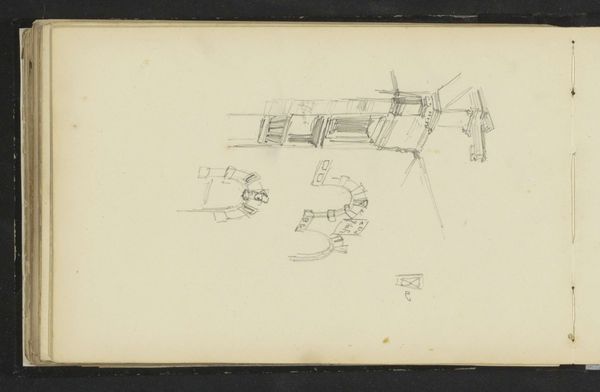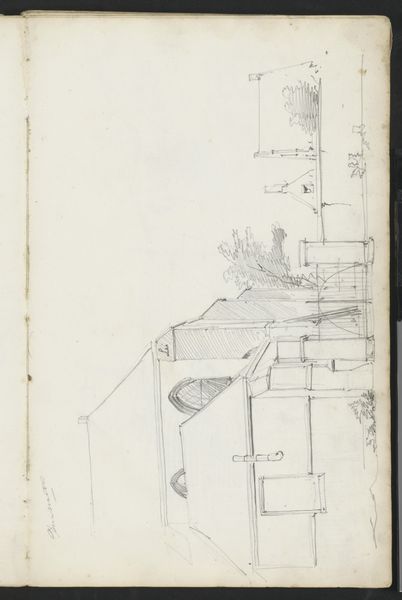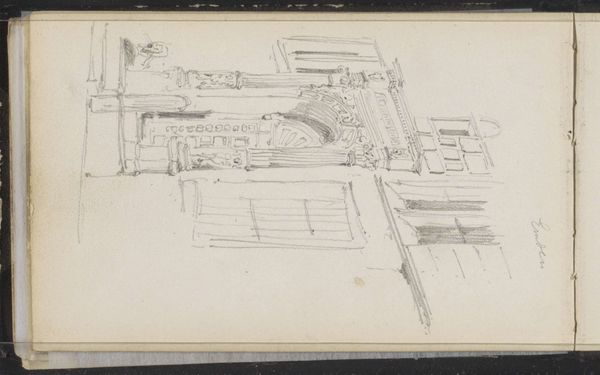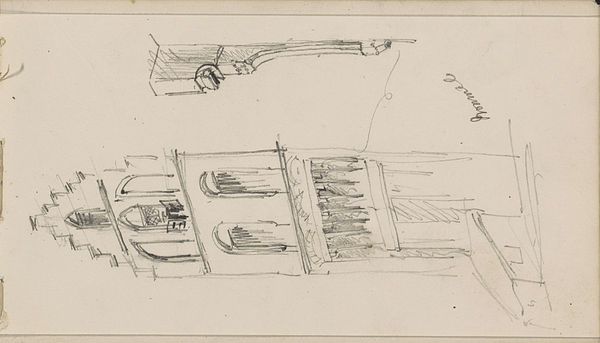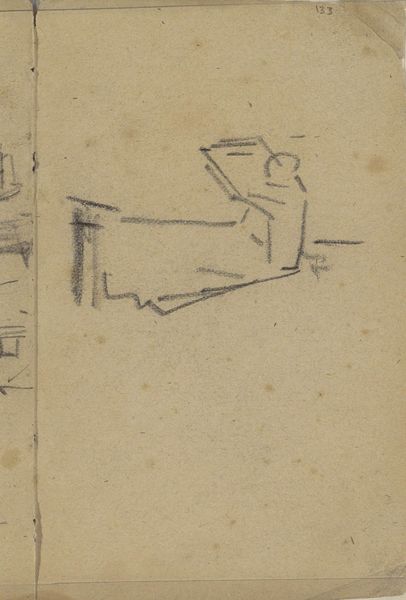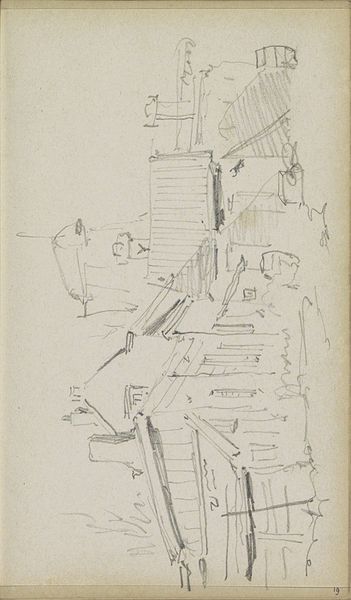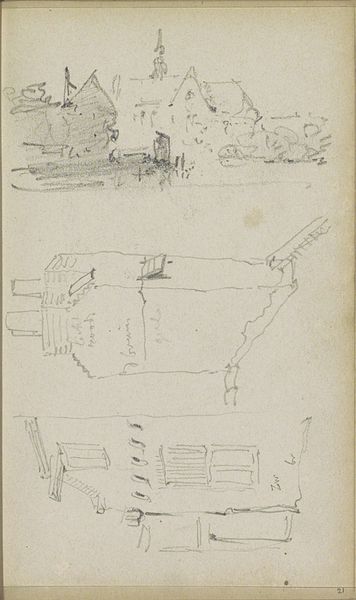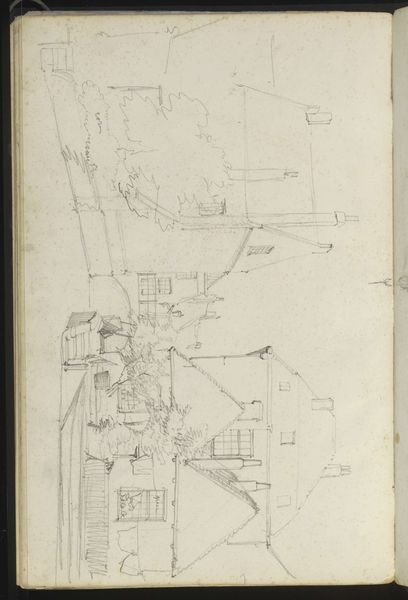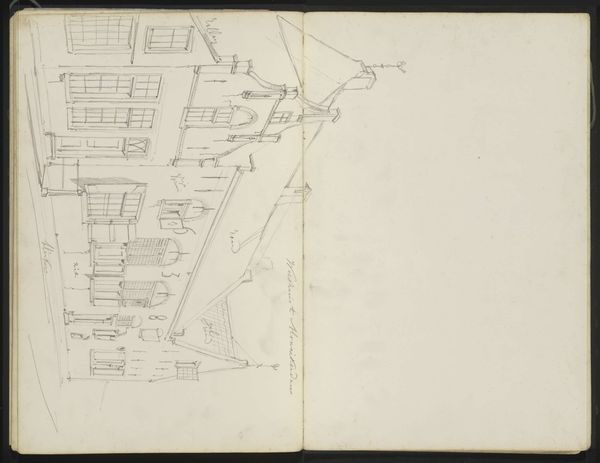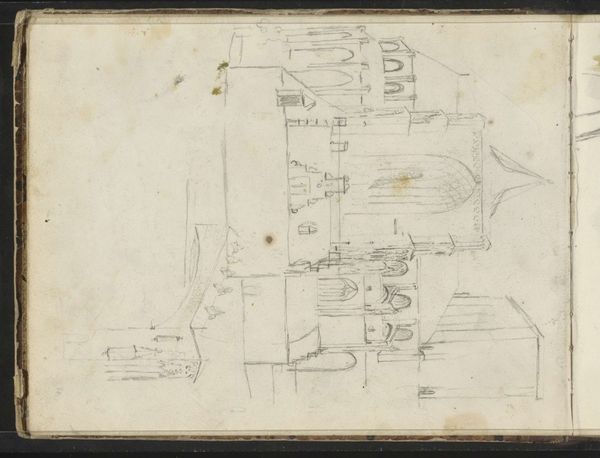
drawing, paper, pencil
#
drawing
#
aged paper
#
toned paper
#
quirky sketch
#
dutch-golden-age
#
sketch book
#
hand drawn type
#
landscape
#
paper
#
personal sketchbook
#
sketchwork
#
sketch
#
pencil
#
sketchbook drawing
#
cityscape
#
storyboard and sketchbook work
#
sketchbook art
#
street
#
realism
Copyright: Rijks Museum: Open Domain
Here is a sketch of facades in Donkerstraat, Harderwijk, made by Cornelis Springer in the 19th century. Look at the windows carefully. They are like eyes staring back at us. Windows, throughout art history, often act as liminal spaces, framing the boundary between the private, interior world and the public, exterior one. In ancient Roman frescoes, windows offered glimpses into idealized landscapes, promising escape. But long before that, Egyptian false doors, resembling windows or portals, were placed in tombs, believed to allow the soul to move freely between worlds. Think of the Renaissance, when the window became a symbol of perspective, offering a rational, ordered view of the world. Yet, in the hands of Symbolist painters, windows became mirrors of the soul, reflecting inner turmoil and longing. Each window, each eye, holds a story, a secret, a reflection of ourselves. The way these windows are portrayed speaks to our collective unconscious, reminding us of the ever-present duality of inside and outside, seen and unseen.
Comments
No comments
Be the first to comment and join the conversation on the ultimate creative platform.
